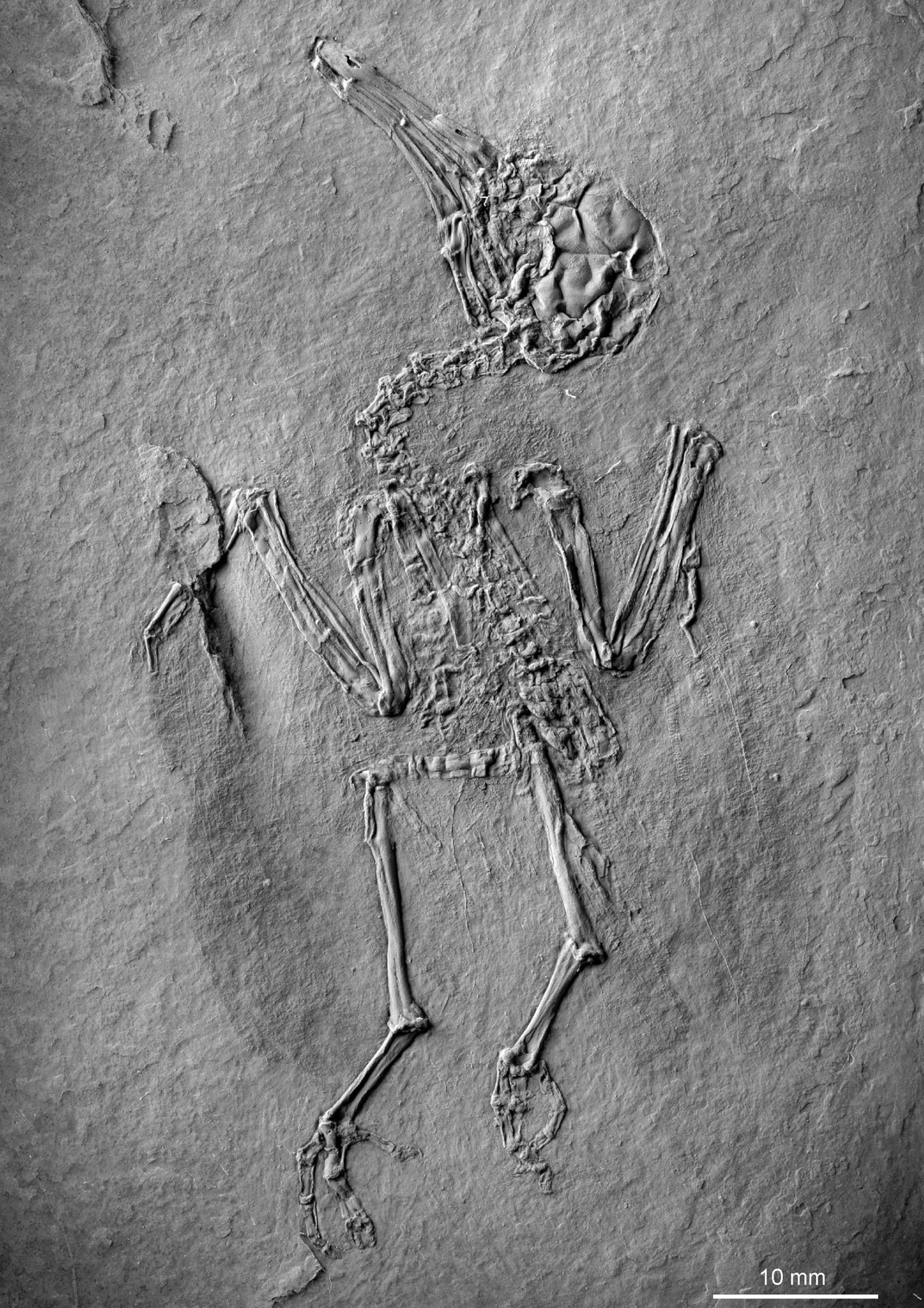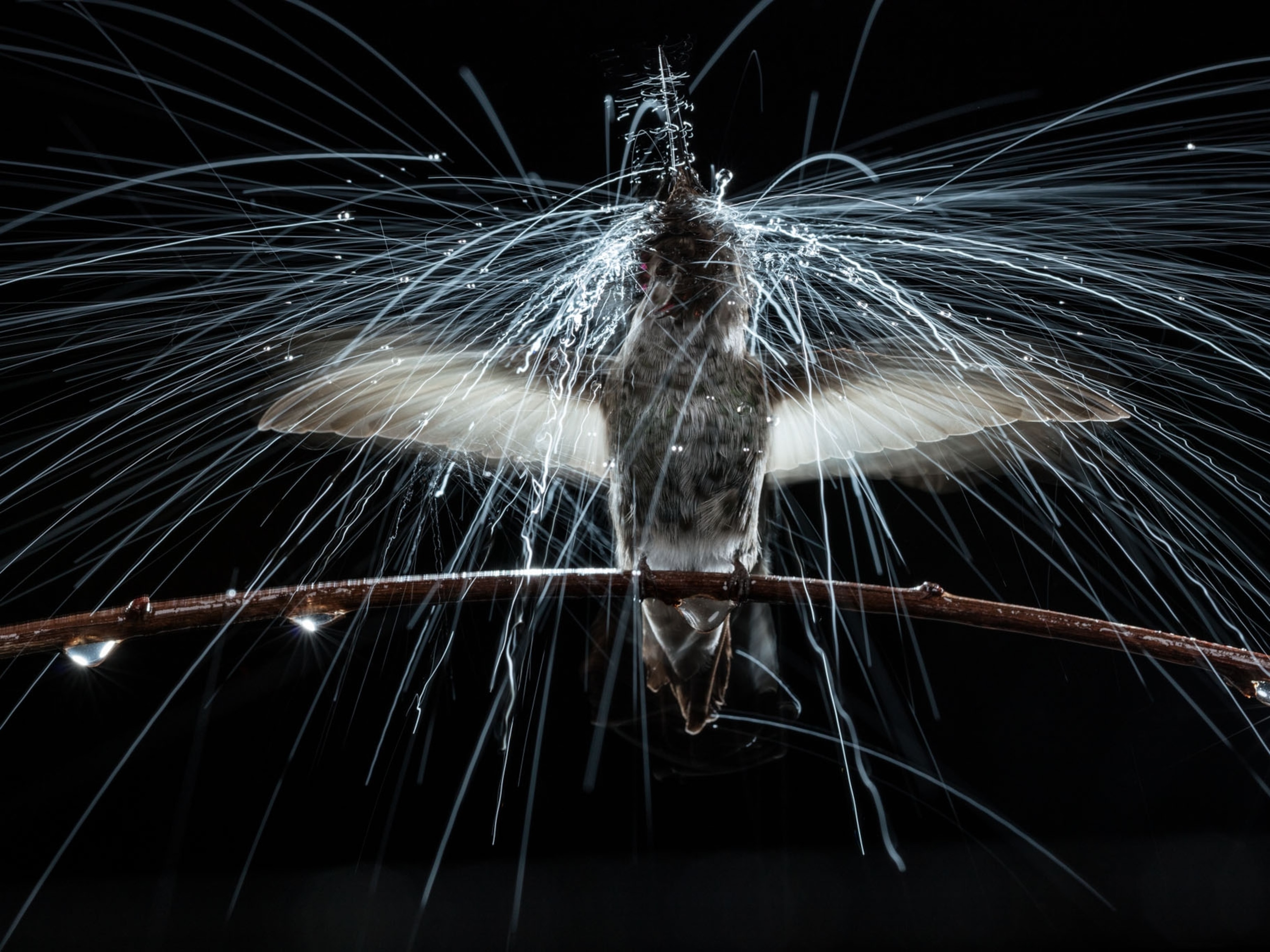
Earliest Bird Pollinator Found in Germany
Fossilized 47 million years ago, it was the size of a hummingbird—but unlike any living species.
Today's hummingbirds ferry pollen from blossom to blossom, helping flowering plants reproduce. Their occupational ancestors, however, were birds of a different feather. According to a paper published in this week's Biology Letters, a fossilized bird from millions of years ago offers the earliest, most direct evidence to date of bird pollination.
The discovery, uncovered in Germany's fossil-rich Messel Pit, reveals a three-inch-long (eight-centimeter) bird—about the size of a hummingbird you see at a backyard bird feeder—with scraps of iridescent insects and hundreds of grains of flower pollen in its stomach. That last supper would be familiar to today's avian pollinators, which siphon up large quantities of flower nectar but also eat pollen and insects, says the paper's lead author, ornithologist Gerald Mayr of the Senckenberg Research Institute of Frankfurt.
Branches of the Avian Tree
The fossilized bird belongs to an extinct species known as Pumiliornis tessellatus. Its feet were built for clinging to branches, and its long, slender beak had the large opening of a hummingbird. Yet it has no close relative among modern species.
Until now, the earliest examples of pollinating birds had been hummingbirds, also described by Mayr, that date back 30 million to 34 million years. But those offer only indirect evidence of bird pollination, because there's nothing to show that the birds actually visited flowers.
Based on the anatomy of earlier fossilized birds and plants, Mayr suspects that bird pollination began shortly before this new species—which he calls "very weird-looking"—took flight. The pollen found in its stomach is from an unknown plant species, but one that evolution had clearly already equipped to be bird friendly.
The new fossil shows that bird pollination is "older that we had evidence for previously, and [is] also more complicated than we suspected," says botanist Quentin Cronk of Canada's University of British Columbia, who was not involved in the new research. "This is clearly a different lineage of birds."
Competing Theories
Other researchers say the new find helps support the idea that bird pollination may have evolved and then disappeared over time. Now-extinct bees related to modern honeybees also lived at Messel, and "it could've been that this little ecosystem bit the dust, and what we have today is something that's more recent," says Conrad Labandeira, curator of fossil arthropods at the Smithsonian Institution's National Museum of Natural History.
The Messel site is rich in fossils of both plants and animals, "and this is a beautiful example of putting those two elements together" to show evolution by both parties, says paleobotanist David Dilcher of Indiana University. It's a "handshake," he says, "across the animal kingdom and the plant kingdom ... from 47 million years ago."





